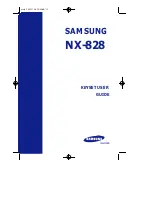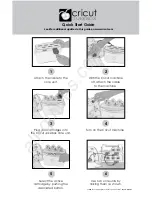
Safety instructions
6
When cleaning the unit, keep water away from the air outlet / fan vent. The
exterior may be wiped with a damp cloth, except the electrical controls, only
when the unit is off and unplugged.
NEVER use detergents, gasoline, glass cleaner, furniture polish, paint thinner or
other household solvents to clean any part of the diffuser. Always use a few drops
of vinegar with water to clean diffuser. Detergent film dissolved in the water
supply can interfere with the output of the unit.
Use in an environment ranging between 50°F and 85°F.
Use only the supplied adapter with this diffuser.
Only for external use, DO NOT place face near mist opening. This is not an inhaler.
Select a location for your diffuser on a flat surface approximately 4 inches away
from a wall.
DO NOT place the diffuser on a finished floor or near furniture which can be
damaged by moisture or water. Place on a water-resistant surface.
DO NOT place diffuser on top of a towel, or a carpeted surface. This may cause
the diffuser to overheat.
DO NOT place diffuser on a wood surface.
THIS DIFFUSER NOT A TOY! Keep out of reach of children! Do not let your child play
with this appliance. Serious injury and electrocution might be possible. This appliance
must be operated by an adult only. Children should be supervised to ensure that they
do not play with the diffuser.
SAVE ALL INSTRUCTIONS!
FCC PART 18
This device complies with Part 18 of the FCC Rules.
Warning: Changes or modifications to this unit not expressly approved by the party responsible for
compliance could void the user’s authority to operate the equipment.
NOTE: This equipment has been tested and found to comply with the limits for a Class B ISM equipment,
pursuant to Part 18 of the FCC Rules. These limits are designed to provide reasonable protection against
harmful interference in a residential installation. This equipment generates, uses and can radiate radio
frequency energy and, if not installed and used in accordance with the instructions, may cause harmful
interference to radio communications.
However, there is no guarantee that interference will not occur in a particular installation. If this
equipment does cause harmful interference to radio or television reception, which can be determined by
turning the equipment off and on, the user is encouraged to try to correct the interference by one or more
of the following measures:
Reorient or relocate the receiving antenna.
Increase the separation between the equipment and receiver.
Connect the equipment into an outlet on a circuit different from that to which the receiver is
connected.
Consult the dealer or an experience radio/TV technician for help.







































